Important Point
How Do Escalators Work?
From a mechanical point of view, an escalator is a simple yet attractive vertical transportation system.
Peak Escalator Hand-selected escalator technicians are trained to provide escalator maintenance services for optimum performance.
We also take feelings of pride in creating opportunities for customers to learn about the inner workings of their equipment.
Escalators are made up of a set of interlocking steps, which are driven by an electric motor.
A pair of chains rotate to move the steps with two pairs of gears, while a large metal structure called a truss surrounds the entire mechanism for connecting the floors.
The steps then move like a conveyor belt, entering a special guide system at the top and bottom of the truss to form a level platform for passengers to board or exit.
History of the Escalator:
An escalator is an escalator that moves people up or down using a conveyor belt and tracks while keeping each step horizontal for passengers.
However, escalators began as a form of entertainment rather than a practical means of transportation.
The first patent related to escalator-like machines was granted in 1859 to a man in Massachusetts for a steam-powered unit.
On March 15, 1892, Jesses Renos patented his moving stairs, or inclined lift, as he called it. In 1895, Reno rode a novelty from his patented design at Coney Island in New York, New York: an escalator that raised passengers at a 25-degree angle on a conveyor belt.
1. Modern Escalators
Escalators as we know it was redesigned in 1897 by Charles Seeberger.
He coined the name escalator from Scala, the Latin word for steps, and elevator, a word for something that had already been invented.
In 1899 Seeberger partnered with the Otis Elevator Company to build the first commercial Escalator at the Otis factory in Yonkers, New York.
A year later, the Seeberger-Otis wooden escalators won first prize at the 1900 Paris Exposition, a world’s fair held in Paris, France.
Meanwhile, the success of Reno’s Coney Island rides briefly made him the top escalator designer. He started the Renault Electric Ladder and Conveyor Company in 1902.
Seeberger sold his escalators patents rights in 1910 to Otis Elevator, who bought Reno’s patent a year later.
Otis dominated escalator production by combining and improvising various designs.
Accords to the company: “In the 1920s, Otis engineer led by David Lindquist combined & improved the Jesse Reno & Charles Seeberger escalator designs to create the cleated, level steps of modern escalators in use today.”
Although Otis continued to dominate the escalator business, the company lost the product’s trademark in 1950 when the U.S.
The Patent Office ruled that escalators have become a generic term for moving stairs. The word lost its proprietary status & its capital “E.”
2. Going Global
Today escalators are installed around the world to take pedestrian traffic to places where lifts would be impractical.
They are used in the department store, shopping malls, airports, transits systems, conventions centers, hotels, arenas, stadiums, train stations, subways, and public buildings.
Escalators are capable of moving large numbers of people and can be placed in the same physical space as stairs, which guide people toward the main exit, special display, or simply up or down a floor.
And you usually don’t have to wait for the Escalator, unlike the elevator.
3. Escalator Safety
Safety is a majors concern in escalator design. Clothes can get tangled in machinery, and children wearing certain types of shoes are at risk of a foot injury.
The fire protection of an escalator can be provided by adding dust collection and automatic fire detection and suppression systems inside the engineered pit.
These are in addition to any water sprinkler system installed on the roof.
Also, Read: What Is Jackscrew? | How Screw Jack Works? | Lead Screw | Types of Screw Jack
Types of Escalator:
1. Parallel Escalator
Parallel escalators are those types of escalators that face in the same direction. These escalators use more floor space than other escalator arrangements, which are found in impressive forms.
On the others hand, it has been found that these are less efficient and more expensive than other escalators.
Parallel escalators can use either spiral or stacked parallel arrangements, which also depends on the practical situation of the site.
Parallel escalators also help the user to continue using it by simply turning at the end of the ride. Parallel escalators are commonly used in places such as:
- Mall
- Metro station
- Public buildings
2. Spiral Parallel Escalator
The roaming feature saves the user from being disturbed. Other types of parallel escalators are stacked parallel escalators, which are mostly used in places like malls, metro stations and are limited to only two stories.
At the same time, they are easily found in public buildings or any other heavy traffic areas, which all run in the same direction.
Stacked parallel escalators provide an option to reverse a specified direction during rush hours when everyone is traveling in a particular direction.
3. Multiple Parallel Escalators
Multiples parallel two or more Escalators are those escalators that travel in the same direction simultaneously next to one or two escalators that travel in the other direction.
Escalators must have a moving handrail to keep pace with the speed of the stairs. The direction of motion remains the same, which a person can control as per the requirement or even automatically.
4. Crisscross Escalator
The crisscross escalator is the most popular arrangement of escalators that place the entry and exit at opposite ends of the Escalator at its upper and lower ends.
This arrangement is specifically known as a crisscross arrangement or a crisscross escalator.
These escalators are commonly knowns as they can be installed at a comparatively low cost and can take up a very small amount of floor space with minimal structural requirements.
A spiral crisscross is one in which the stairs rest into each other and provide a fast and comfortable journey at very little cost and space.
These escalators can be easily used up to five floors without any inconvenience. In a walk-around crisscross escalator arrangement, proper construction of the floor around the Escalator is required, which provides an opportunity to view the goods.
In these escalators, there is only one move up or down in one direction.
Travel gets worse when the space between floors is kept insufficient.
This leads to overcrowding, jostling, and delays causing inconvenience to people, and the problem can get worse if passengers travel more than three floors and do not have access to escalators.
The places where you can easily find a crisscross lift are as follows:
- Cinema Hall
- Airport
- Department Store
5. Curved Escalator
A curved escalator is one that is designed in a particular way, including curved or helical shapes with curved steps. These Escalators are curved either to the left or to the right.
This Escalator is mostly those which are used in places where stairs need to be attached with the help of any landing. Curved escalators are installed either to enhance the architectural beauty or to save space.
The angle at which the Escalators are inclined is 30 degrees. The number of people that can be carried per hour is about 6500.
The averages rated speed covered by it is about 25 meters per minute, and the vertical rise in meters varies from 3500-6600.
6. Step Type Escalator
These are the most common type of escalators, which are making quite a resurgence these days.
The stairs that are being made nowadays are of metal whereas earlier these stairs were made of wood, which was not so successful.
Step-type escalators are popular because they can go up or down, they can be flat, then up and down.
Escalator stairs are mounted on hinged circles, which track its appearance in addition to the steps that are visible from all of the above steps.
This Escalator is designed to be much safer than any other type of Escalator.
7. Wheelchair-Accessible Escalators
Wheelchair-accessible escalators are escalators that have an attendant who will stop if someone in a wheelchair needs to use the Escalator.
This type of Escalator is designed to give patients or a wheelchair user-facing convenience while traveling.
Once the wheelchair is mounted on the Escalator, it automatically switches to a special mode. The three resulting steps will be flat to form a platform.
It will then be found that the step closest to the lower landing of the Escalator of the platform has some spikes made up of 3 steps that prevent the roll-off of the passenger’s wheelchair from the platform.
Once this is done, the Escalator will start moving slowly on its own. The attendant shall compulsorily travel with the passenger to maintain the safety of the passenger.
Once the process is complete, the Escalator will return to its original speed, and as the wheelchair-bound passenger approaches the top, the Escalator will slow down.
After a wheelchair-bound passenger disembarks the Escalator, the Escalator returns to its normal operating speed. These escalators are mostly found and installed in Japan.
It is still not known whether wheelchair-accessible escalators have been launched.
Useful Article For You
- Alternator Vs Generator
- Axle Seal Leak
- What Is Cast Iron
- Car with Lock Symbol
- What Is an Automobile
- How Does a Magneto Work
- What Is Hydropower
- What Is a Misfire
- What Is Arc Welding
- Flight of Stairs
- Types of Cranes
- Cam and Follower
- Disc Brakes Work By
- Car Shaking When Idle
- Beater Car
- Service Battery Charging System
- Types of Hammers
- Resonator Delete
- Rivet Definition
- Coolant Leak Repair Cost
- 6.0 Vortec
- Battery Saver Active
- File Tool
- Cheapest Place to Get Brakes Done
- Tire Feathering
- Ecm Motor
- Service Stabilitrak Chevy Cruze
- Nut Vs Bolt
- Ship Engine
- Interstate Car Battery
- Hvac System Diagram
- Keyless Remote Battery Low
- What Is a Girder
- Shaded Pole Motor
- Mechanical Engineering Companies
- Cv Joint Noise When Driving Straight
- Cnc Bdsm
- Egr Vacuum Solenoid
- Can You Mix Red and Green Coolant
- Reaction Turbine
- Tin Snips Vs Aviation Snips
- Electrical Phases
- Service Steering Column Lock
- Low Power Steering Fluid Symptoms
- Pipe Joints
- Best Welding Schools
- 168 Vs 194 Bulb
- What Is a Coupling
- Dog Clutch
- Beater Cars for Sale
- Does Radiator Stop Leak Work
- How to Reset Fuel Gauge
- Turboshaft Engine
- 5g Welding Position
- Mevotech Vs Moog
- Nuclear Power Plant Parts
- Water Cooled Condenser
- Scotch Yoke Mechanism
- Different Types of Airplanes
- How to Use Bolt Cutters
- Air Lift Pump
- Types of Dimensions
- How to Clean Fuel Pump Without Removal
- Car Roof Leak Repair
- Mechanic Nails
- Scotch Marine Boilers
- Simple Indexing
- Grashof’s Law
- How to Reset Carrier Aircon Without Reset Button
- Different Types of Measuring Tools
- Coolant Leak Repair Cost Bmw
- Vivint Thermostat Not Turning on Ac
- Motor Vehicles Services Notice
- Parts of a Car Wheel
Working of Escalator:
Escalators typically move at a speed of 1-2 Foot per second. The normal angle is 30 degrees to the ground. Most escalators consist of single-piece aluminum stairs that move along the track by electric motors.
In addition, escalators have different configurations.
Parallel, multiple parallel, & criss-cross configurations. The moving handrail moves along the Escalator, providing assistance to the passengers. You can set the direction of travel permanently.
Even you can control it manually as per the requirement or flow of the crowd. Sometimes you also have the option of automatic controls.
Components of Escalator:
#1. Top and bottom landing platforms
These two platforms have curved sections of tracks, as well as gears and motors that drive the stairs.
The top platform houses the motor assembly and main drive gear, while the bottom holds the step return idler sprocket.
These sections also anchor the end of the escalator trusses.
In addition, the platforms have a floor plate and a comb plate. Floors plate provides places for passengers to stand before stepping on the escalating stairs.
These plates are flush with the finished floor & are either hinged or removable to allow easy access to the machinery below.
The comb plates are the piece between the stationary floor plates & the moving stage. It is so named because its edge consists of a series of cleats that look like the teeth of a comb.
These teeth are reticulated with matching cleats on the sides of the steps.
These designs are necessary to minimize the gap between the ladder and the landing, which helps prevents objects from getting stucks in the gap.
#2. Truss
A truss is a hollow metal structure that bridges the lower and upper landings. It is made up of two side sections that are connected with cross braces just below the bottom and the top.
The ends of the trusses are attached to the landing platform at the top and bottom by means of steel or concrete supports.
The truss carries all the straights tracks section connecting the upper & lower sections.
#3. Tracks
Tracks system is built into the truss to guide the step chains, which continuously pull the steps from the platform below and back up in endless loops.
There is actually two-track: one for the front wheels of the step, called the step-wheel tracks, & one for the rear wheels of the steps, called the trailer-wheel track.
The relative position of these tracks causes ladders to form as they exist under the comb plate. The tracks are at their maximum distance along the straight side of the truss.
This configuration forces the back of a step to be at a 90-degree angle relative to the step.
This right-angle folds the stairs into a ladder shape. At the top & bottoms of the escalators, the two tracks interconnect so that the front and rear wheels of the stairs are almost in a straight line.
This causes the stairs to be carried one after the other in a flat sheet-like arrangement so that they can travel smoothly around turns in a curved section of track.
The tracks move down the bottom steps of the trusses until they reach the landing below, where they pass through another’s curved section of the track before exiting the landing below.
At this point, the tracks separate, & the steps once again assume a stair configuration. This cycle is repeated continuously as the steps are pulled from the bottom up and down again.
#4. Steps
The stages themselves are solid, one-piece, die-cast aluminum. Rubber mats may be glued to their surface to reduce slippage, and yellow demarcation lines may be added to clearly indicate their edges.
The leading and trailing edges of each stage are cleared of comb-like protrusions that are meshed with comb plates on the top and bottom platforms.
The phases are connected by a continuous metal chain, so they form a closed loop in which each phase is able to bend with respect to its neighbors.
The front and rear sides of the steps are each connected by two wheels.
The rear wheels have been set apart to fit the rear, and the front wheel has short axles to fit into the narrowers front tracks.
As described above, the position of the track controls the orientation of the steps.
#5. Railing
Handrails provide convenient handholds for passengers while riding the Escalator. These are made up of four different sections.
In the center of the railing is a “slider,” also known as “glider ply,” which is a layer of cotton or synthetic textile.
The purpose of the sliders layer is to allow the handrails to move smoothly along their tracks. The next layer, known as the tensions member, consists of a steel cable or flat steel tape.
This provides the handrail with the required tensile strength and flexibility.
On top of tension, the members are internal construction components made of chemically treated rubber designed to prevent the layers from falling apart.
Finally, the outer layer, the only part travelers really see, is the rubber cover, which is a mixture of synthetic polymers and rubber.
This cover is designed to resist corrosion from environmental conditions, and mechanical wear and tear from human vandalism. Railings are manufactured by feeding rubber through a computer-controlled extrusion machine to produce the required size and type of layers to match a specific order.
The constituent layers of fabric, rubber, and steel are shaped by skilled workers before being put into the press; they are joined together.
When installed, the finished guardrail is pulled along its track by chains that are connected to the main drive gears by a series of pulleys.
Also, Read: How to Change Transmission Fluid? | How to Replace Transmission Fluid | Why Change Transmission Fluid?
Design of Escalator:
Many factors influence escalator design, including physical requirements, location, traffic patterns, safety considerations, and aesthetic preferences.
Most important, physical factors such as vertical and horizontal distances must be spanned.
This factor will determine the pitch of the Escalator & its actual length. The ability of a building’s infrastructure to support heavy components is also an important material concern.
Location is important as escalators should be such that they can be easily seen by the general public. In a department store, the customer should be able to easily view the merchandise.
In addition, up and down escalator traffic should be physically separated and should not move in confined spaces. The traffic pattern should also be estimated in the escalator design.
In some buildings, the purpose is simply to move people from one floor to another’s, but in others, there may be a more specific need, such as transporting visitors to the main exit or exhibition.
The number of passengers is important because the Escalator is designed to carry a certain maximums number of people.
For example, single-width escalators traveling at about 1.5 feet (0.45 m) per second can move an estimated 170 persons per five-minutes period.
Wider models traveling up to 2 feet (0.6 m) per second can handle more than 450 people in the same time period. The carrying capacity of the Escalator should match the expected peak traffic demand.
This is important for applications in which there is a sudden increase in the number of passengers.
For example, escalators use in train stations must be designed to meet the peak traffic flow emanating from the train without excessive clumps at the entrance of the Escalator.
Of course, safety is also a majors concern in escalator design.
Fire protection of an escalator floor opening can be provided by adding automatic sprinklers or fireproof shutters to the opening or by installing escalators in an enclosed fire-protected hall.
To limit the risk of overheating, adequate ventilation should be provided for motor and geared locations.
It is preferred that a conventional stairway be located adjacent to the Escalator if the escalators are the primary mean of transport between floors.
It may also be necessary to provide lifts for wheelchairs and disabled persons adjacent to the escalators. Finally, the aesthetics of the Escalator must be considered.
Architects & designers can choose from a wide range of styles and colors for handrails and tinted side panels.
Manufacturing Process:
The first step in escalator construction is to establish the design, as described above. The escalator manufacturer uses this information to create appropriately customized types of equipment.
There are two types of companies that supply Escalator, the primary manufacturers who actually make the equipment and the secondary suppliers who design and install the equipment.
In most cases, secondary suppliers obtain the necessary equipment from the primary manufacturers and make the necessary modifications for installation.
Therefore, most escalators are actually assembled by the primary manufacturer. The track, step chain, ladder assembly, and motorized gears and pulleys are all bolted onto the truss prior to shipping.
Prior to installation, landing areas must be prepared to be connected to escalators. For example, concrete fittings must be cast, and the steel structure that will hold the trusses in place must be attached.
After delivery of the Escalator, the entire assembly is unrolled and jockeyed to a position between the top & bottom landing holes.
There is a variety of a method for lifting a truss assembly into place, one of which is a scissor lift device mounted on a wheel support platform.
The scissor lift is outfitted with a locator assembly to aid in the vertical and angular alignments of the Escalator. With such devices, the upper end of the truss can be easily aligned and then supported by a support wall attached to the upper landing. The lower end of the truss can later be lowered into the pit attached to the floor of the lower landing.
In some cases, the railing may be shipped separately from the rest of the equipment. In such conditions, they are carefully coiled and packed for shipping.
After the escalators are installed, they are attached with suitable chains. Make the final connections to the power source and ensure that all tracks and chains are properly aligned.
Verify that all motorized elements are working properly, that the belt and chain move smoothly and at the correct speed,& that the emergency braking systems are activated.
The step threads should be far enough apart so that they can’t pinch or rub against each other.
However, they should be positioned in such a way that no larges gaps are present, which can increase the chances of injury.
Frequently Asked Questions (FAQ)
Escalators Parts
- The Escalator consists of the following components:
- Landing Platforms.
- Truss.
- Tracks.
- Steps.
- Handrail.
- Escalator Exterior (Balustrade).
- Drive system.
- Auto-Lubrication System.
Escalators
An escalator is a moving staircase that carries people between floors of a building or structure. It consists of a motor-driven chain of individually linked steps on a track that cycle on a pair of tracks that keep them horizontal.
How Do Escalators Work?
An escalator is made up of a set of interlocking steps, powered by an electric motor. A pair of chains looped around two pairs of gears rotate to move the steps along while a larger metal structure called a truss encases the entire mechanism to connect the floors.
Types of Escalator
- Parallel Escalator
- Spiral Parallel Escalator
- Multiple Parallel Escalators
- Crisscross Escalator
- Curved Escalator
- Step Type Escalator
- Wheelchair-Accessible Escalators
Working of Escalator
How an Escalator Works. An escalator is made up of a set of interlocking steps, powered by an electric motor. A pair of chains looped around two pairs of gears rotate to move the steps along while a larger metal structure called a truss encases the entire mechanism to connect the floors.
Like this post? Share it with your friends!
Suggested Read –
- Types of Axles
- Difference Between Orthogonal and Oblique Cutting | Orthogonal Machining
- Parts of Shaper Machine | What Is the Shaper Machine? | Working of Shaper Machine
- What Is a Synchromesh Gearbox? | Principle of Synchromesh Gearbox | Construction of Synchromesh Gearbox | Working of Synchromesh Gearbox
- Working of Constant Mesh Gearbox | What Is a Constant Mesh Gearbox? | Different Gear Ratios in Constant Mesh Gearbox | Construction of Constant Mesh Gearbox
- What Is Magneto Ignition System | How Does an Ignition System Work | How Does a Magneto Work | What Does a Magneto Do | Magneto Ignition System

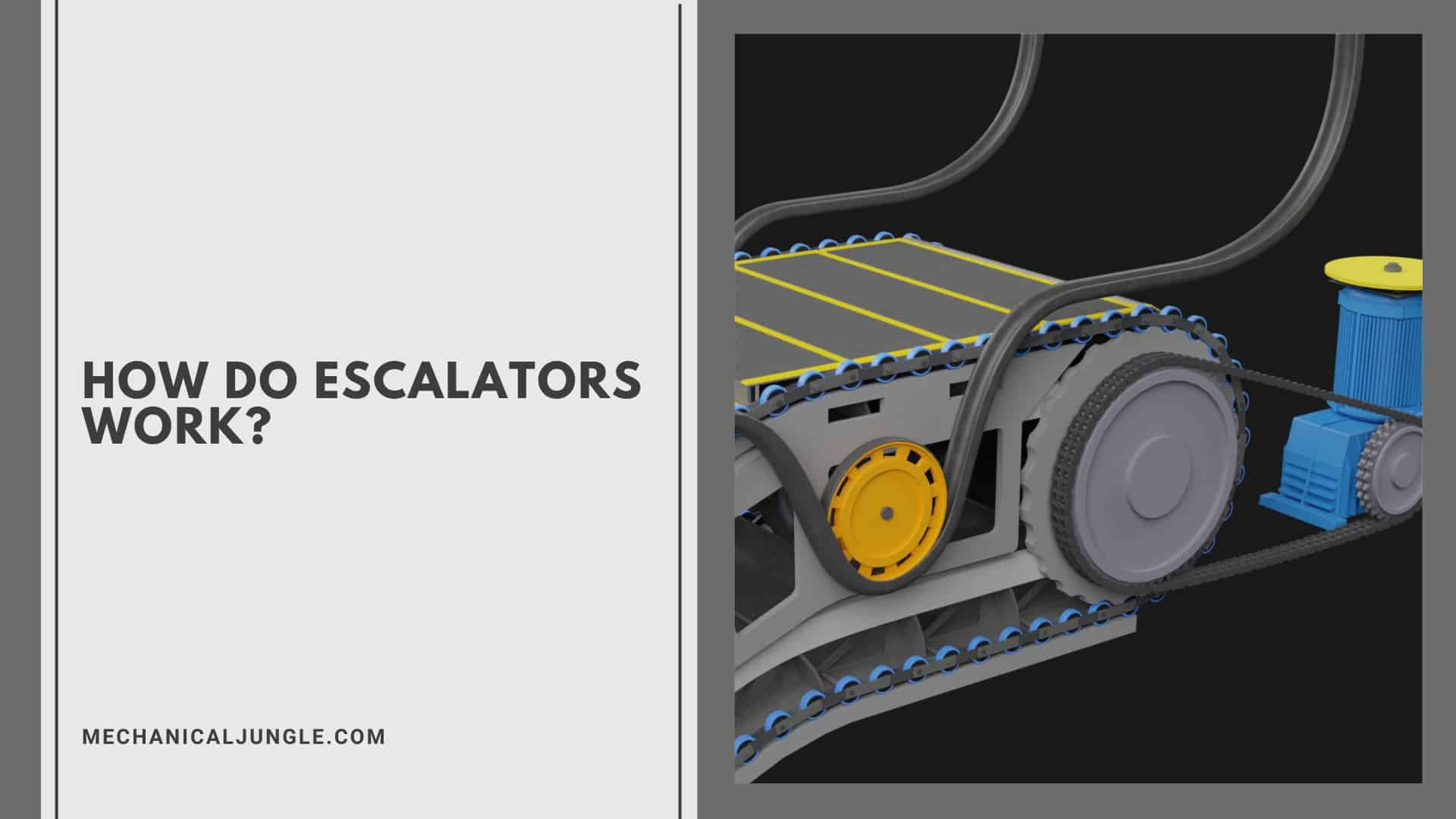




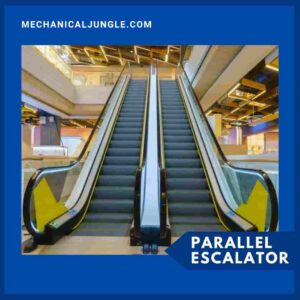
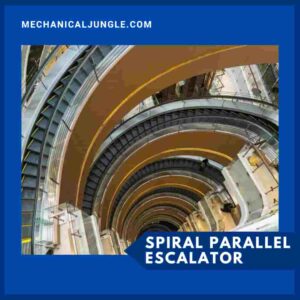

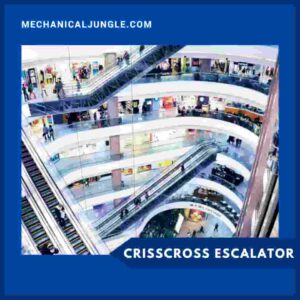
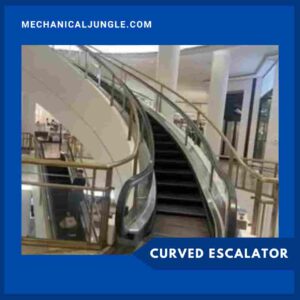
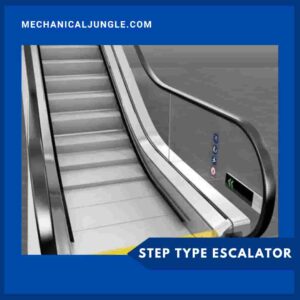

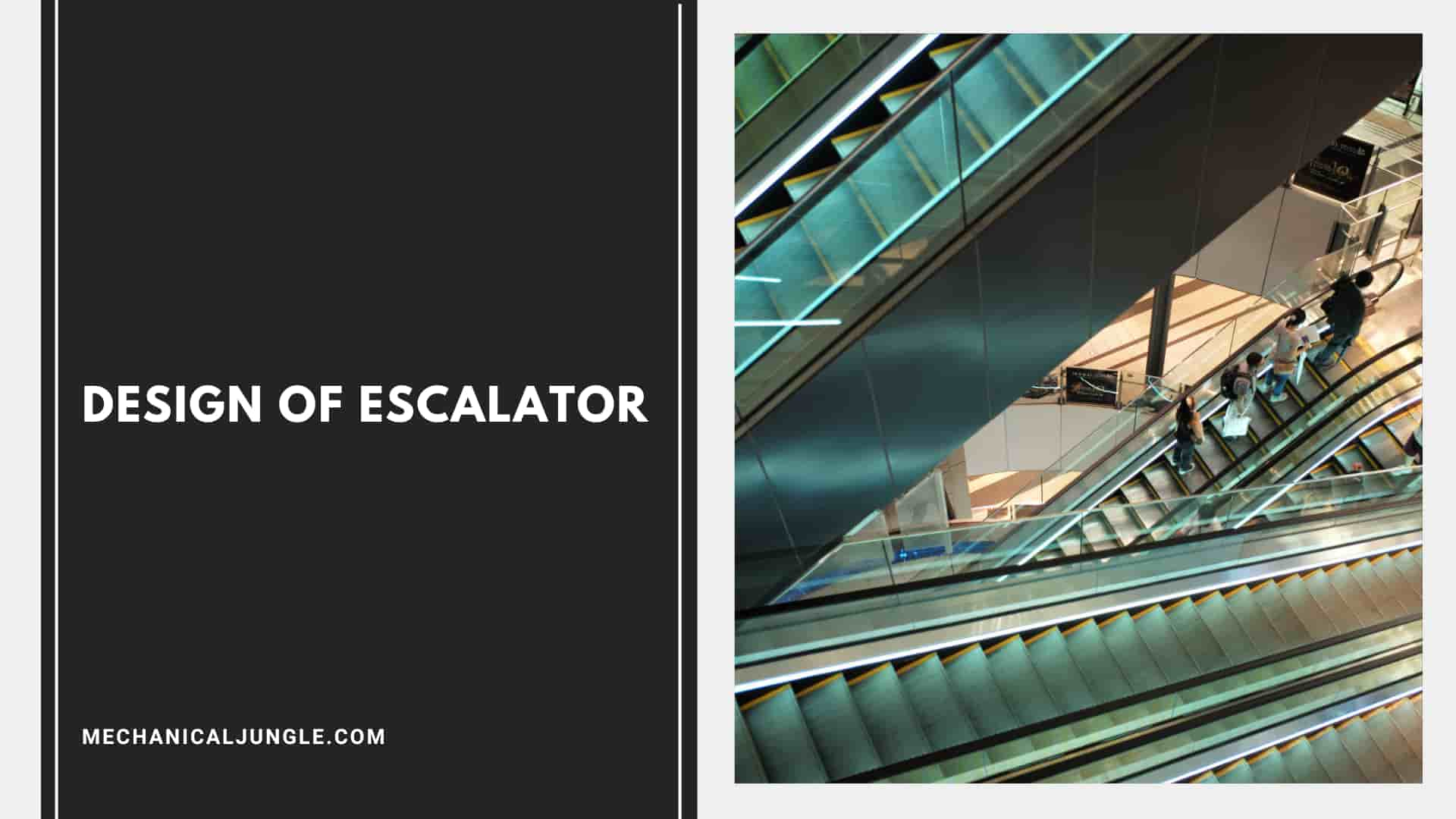

Leave a Reply